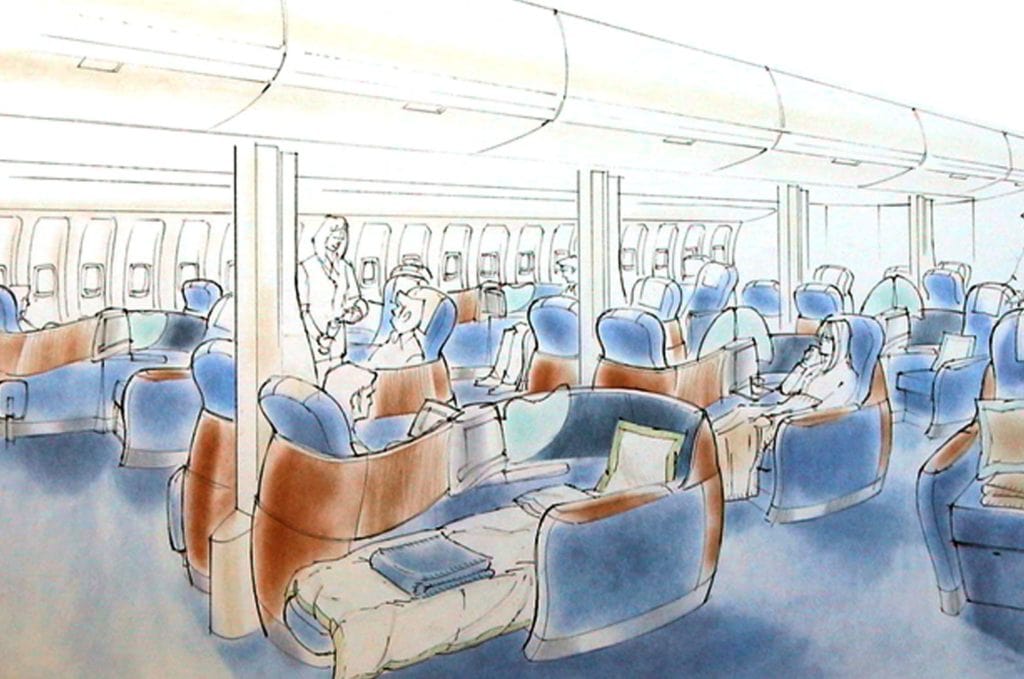40 Success Stories: When Tangerine Created Balance With Yin-Yang Seats
Share

To celebrate the 40th anniversary of APEX EXPO this year, we’re looking back at APEX members’ most significant achievements. Today, we take a look at what effect tangerine’s yin-yang seating design had on business-class comfort.
Register for APEX EXPO (Los Angeles, September 9-12)
In 1998, tangerine began developing its yin-yang seating for British Airways’ business-class cabin – the first product that would give passengers flying in business access to a fully lie-flat bed – a privilege previously saved only for first-class passengers.
Originally presented to British Airways as a concept called Sky Lounge during a competitive tender process involving over 20 design agencies, the premise was that “the elbow of one passenger ‘sits’ over the hip of the other passenger,” explained Matt Round, who was creative director on the yin-yang project and is now tangerine’s chief creative officer.
Not only did this give passengers more privacy – one could sit up and work, while their neighbor could sleep – it meant a better night’s sleep for all. Round said, “We hired a sleep expert for the project and learned that people turn over 30-40 times each night undisturbed. Reclining seats or chairs where you put your feet into a footwell prevent the ability to turn freely, disturbing your sleep.” A fully lie-flat bed solved this problem.

The density afforded by the yin-yang layout led to an improved passenger experience and a commercially viable product – seating eight abreast on a Boeing 747 was an improvement on BA’s previous 2-3-2 layout. Martin Darbyshire, tangerine’s founder and CEO, said the Club World seat achieved a full return on investment within 12 months of taking flight.
After 20 years, the product is still flying today, but with further improvements. In 2006, the first version of the yin-yang seat was replaced with a second generation that features the same footprint, but it has 25% additional shoulder space as well as a zero-gravity recline position.
Tangerine credits Bob Ayling, CEO of British Airways from 1996 to 2000, with enabling the breakthrough concept to reach the market.
See more posts from the 40 Success Stories campaign.



